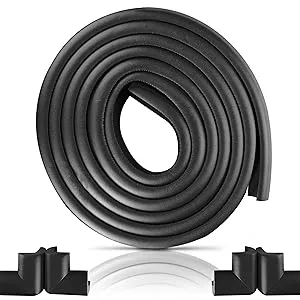door sweep gap
Understanding Door Sweep Gaps Importance, Solutions, and Maintenance
When it comes to maintaining a comfortable and energy-efficient home, often overlooked details can make a significant difference. One such detail is the door sweep gap, the space between the bottom of a door and the floor. This seemingly minor gap can impact energy efficiency, indoor air quality, and even security. In this article, we will explore what door sweep gaps are, why they matter, and how to address them effectively.
What is a Door Sweep Gap?
A door sweep gap is the space that remains between the bottom edge of a door and the floor or threshold. This gap is essential for allowing a door to swing open and shut without obstruction; however, if the gap is too wide, it can lead to various issues. The standard door sweep gap typically ranges from 1/4 inch to 1/2 inch. A gap that exceeds this measure can invite a host of problems into your home.
Why Door Sweep Gaps Matter
1. Energy Efficiency One of the most significant concerns associated with door sweep gaps is energy efficiency. Gaps allow heated or cooled air to escape, forcing HVAC systems to work harder to maintain the desired indoor temperature. This can result in increased utility bills and a larger carbon footprint. Sealing these gaps can lead to substantial energy savings over time.
2. Pests and Allergens A gap beneath a door provides an easy entry point for pests, such as insects and rodents. These critters can jeopardize the cleanliness and safety of your home. Moreover, gaps can also allow dust, pollen, and other allergens to enter, exacerbating allergy symptoms and reducing overall air quality.
3. Security Risks A significant door sweep gap can also compromise security. If a gap is wide enough, it could allow intruders a point of leverage or, at the very least, will indicate that a door may be easier to breach. Therefore, ensuring that the door fits snugly against the frame is crucial for both security and peace of mind.
4. Weatherization Weather conditions can significantly impact indoor comfort levels. A door sweep gap may let in drafts, rain, snow, or cold air, leading to discomfort during extreme weather. Properly sealing doors with appropriate sweeps can provide a buffer against harsh outdoor elements, keeping your home cozy year-round.
Solutions for Door Sweep Gaps
door sweep gap

To address door sweep gaps, several solutions are readily available
1. Install a Door Sweep The simplest and most effective solution is to install a door sweep. This can be a metal, vinyl, or rubber strip that attaches to the bottom of the door, filling the gap and preventing air, pests, and dust from entering.
2. Adjust the Door Sometimes, the problem lies in the door's alignment. If a door is misaligned, it can create an excessive gap at the bottom. Adjusting the hinges or shimming the door frame can solve the misalignment issue.
3. Use Weatherstripping In addition to door sweeps, weatherstripping can be used around the door frame to seal any further gaps. This creates additional insulation and takes care of any potential leaks.
4. Threshold Adjustments If the door gap is particularly large, consider installing or adjusting the threshold. A strategically placed threshold can help bridge the gap effectively.
Maintenance of Door Sweeps
Once you've addressed door sweep gaps, it’s essential to maintain them. Inspect them regularly for wear and tear. A door sweep may need replacing periodically, especially in high-traffic areas. Keeping the door frame and the door itself clean will also aid in maintaining a proper seal, ensuring that energy efficiency and comfort are preserved.
Conclusion
Recognizing and addressing door sweep gaps may initially seem trivial, but the impact on energy efficiency, comfort, and security cannot be overstated. By taking the time to assess and seal these gaps, homeowners can enjoy a healthier, more efficient, and comfortable living environment. Whether through simple installations or adjustments, ensuring a proper seal is an investment that pays off in the long run.
-
Under Door Draught Stopper: Essential ProtectionNewsJul.31,2025
-
Garage Door Seal and Weatherstrips for ProtectionNewsJul.31,2025
-
Edge Banding Tape for Perfect EdgesNewsJul.31,2025
-
Table Corner Guards and Wall Corner ProtectorsNewsJul.31,2025
-
Stair Nose Edging Trim and Tile Stair SolutionsNewsJul.31,2025
-
Truck Bed Rubber Mats for Pickup BedsNewsJul.31,2025
-
Window Weather Stripping for Noise ReductionNewsJul.29,2025